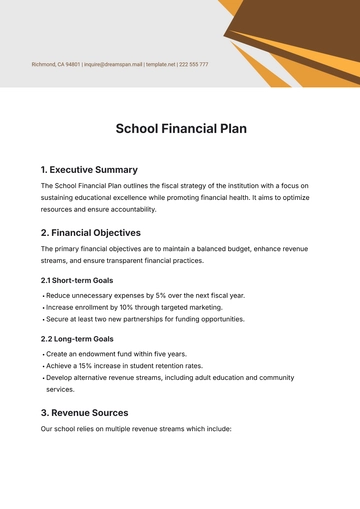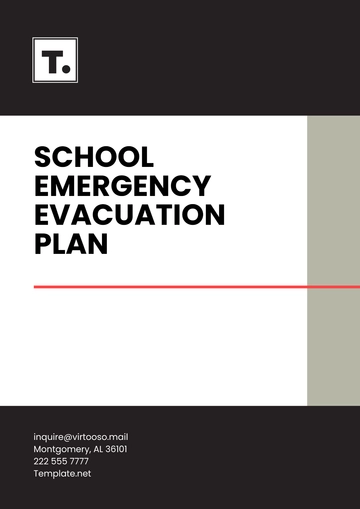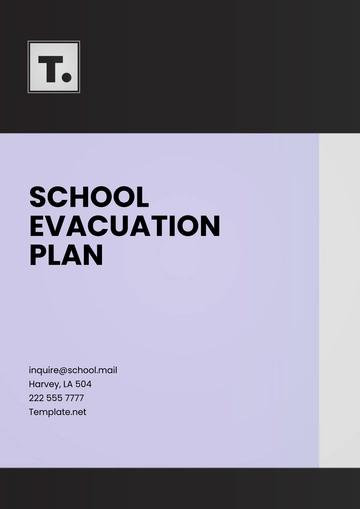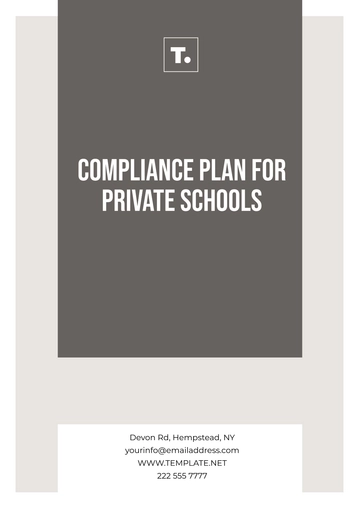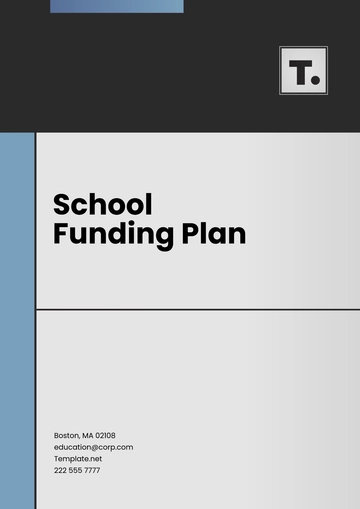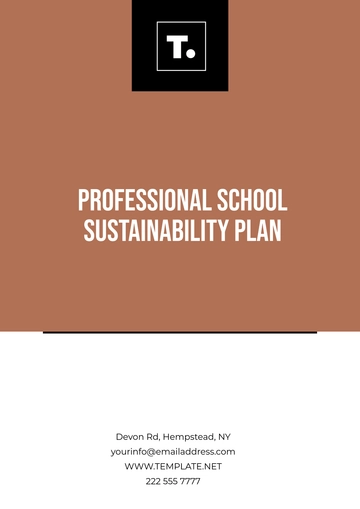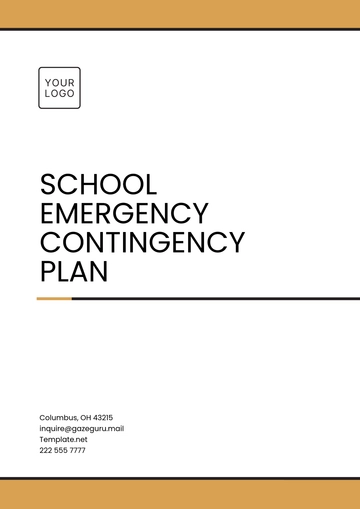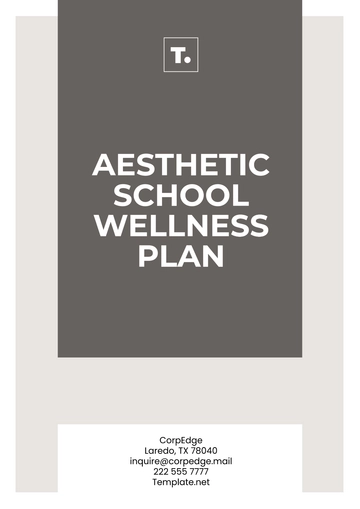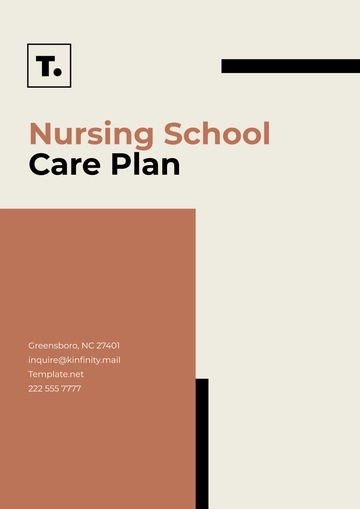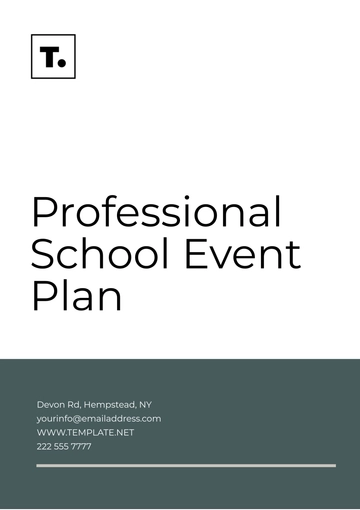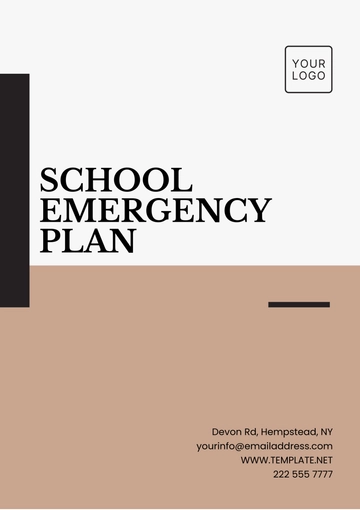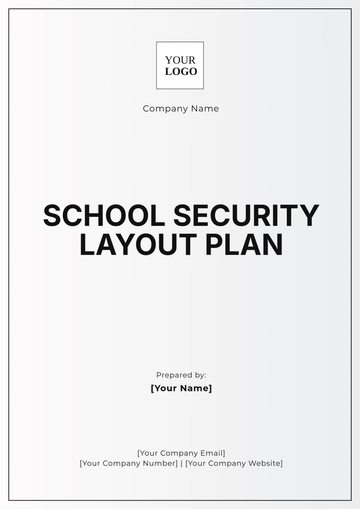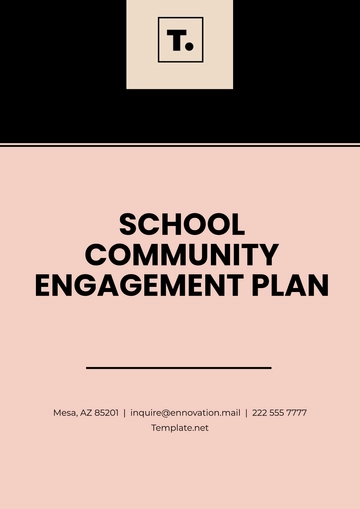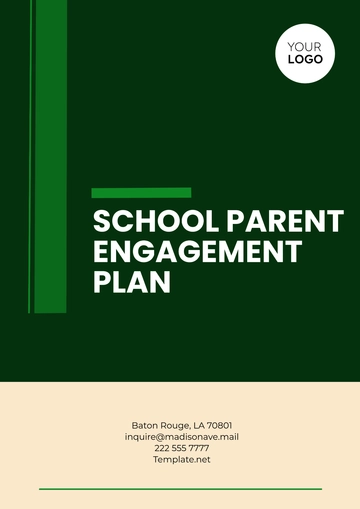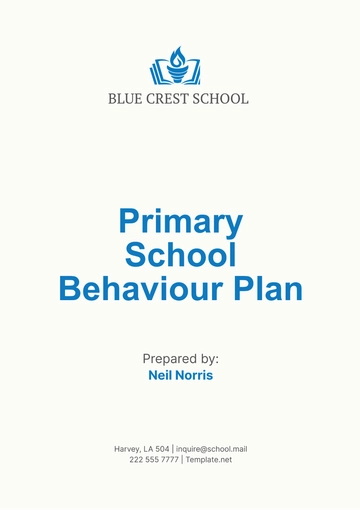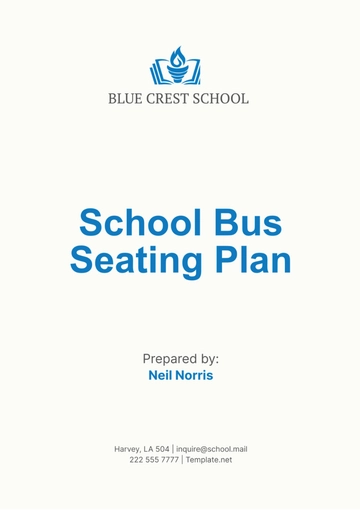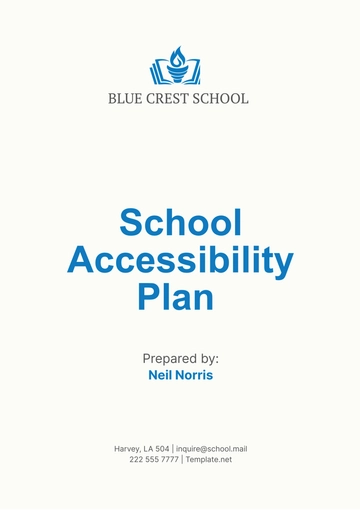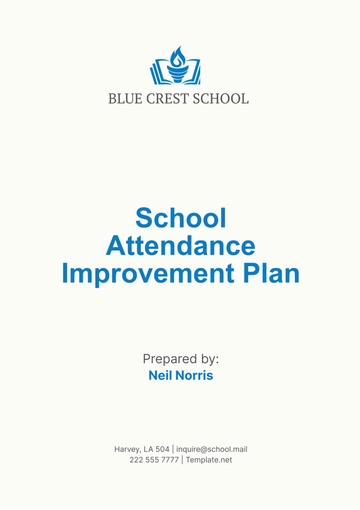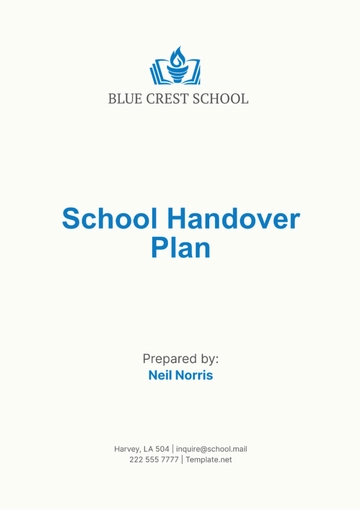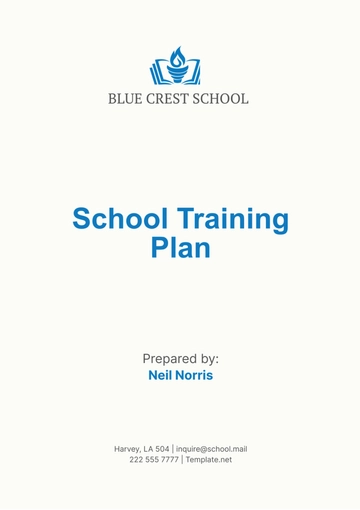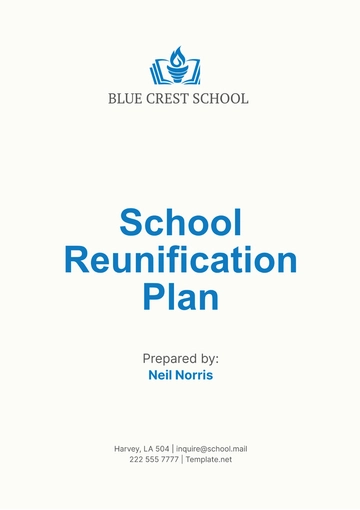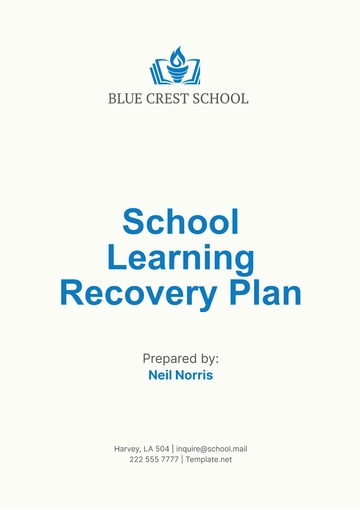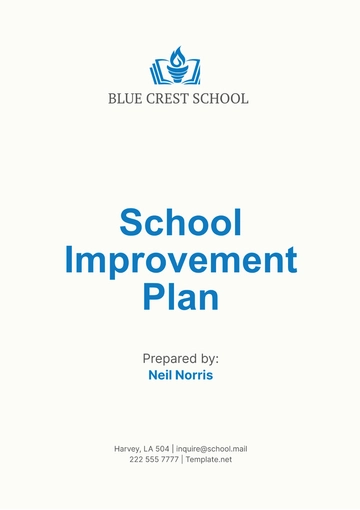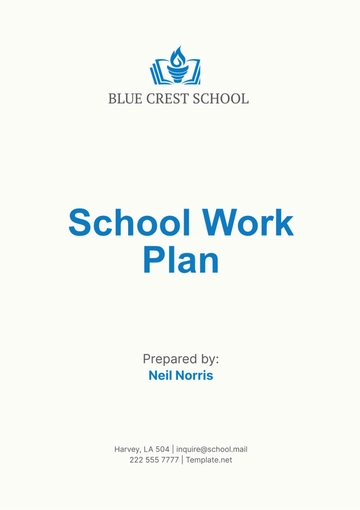Free School Work Plan
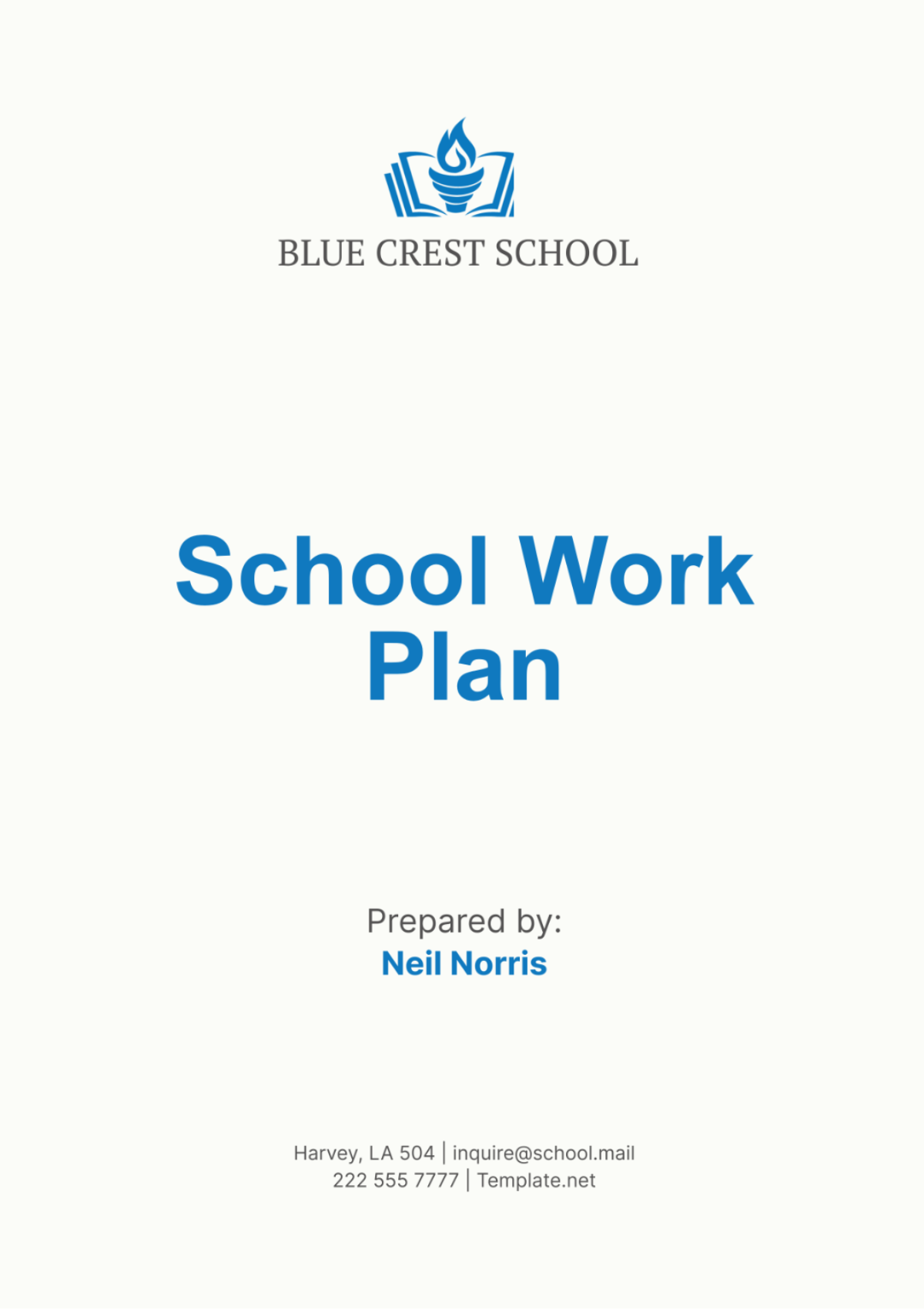
1. Introduction
Effective planning is crucial for the success of any educational institution. This comprehensive School Work Plan outlines the strategic and operational roadmap for [Your Company Name] to achieve its educational goals. The plan includes detailed sections on goals and objectives, strategic and operational planning, resource allocation, and monitoring and evaluation mechanisms to ensure accountability and continuous improvement.
2. Executive Summary
The purpose of this School Work Plan is to provide a structured framework for managing school operations and achieving long-term objectives. This plan outlines a comprehensive strategy that includes setting clear, measurable goals, efficiently allocating resources, and systematically monitoring progress to enhance educational outcomes. [Your Company Name] is committed to creating a high-quality learning environment that fosters academic excellence, personal growth, and community engagement.
To achieve this, the plan focuses on several key areas:
Academic Excellence: Ensuring that all students achieve and maintain high academic standards through a rigorous curriculum and effective teaching methodologies.
Holistic Student Development: Promoting intellectual, social, emotional, and physical development through a diverse range of programs and activities.
Community Engagement: Building robust partnerships with parents, local businesses, and community organizations to support student success and community involvement.
Staff Development: Investing in continuous professional development to ensure that all staff members are equipped with the skills and knowledge necessary to provide high-quality education.
Resource Optimization: Utilizing resources efficiently to support educational initiatives and maintain a sustainable operational model.
By focusing on these areas, [Your Company Name] aims to create a supportive and enriching environment where every student can thrive. The plan also includes mechanisms for monitoring and evaluating progress to ensure that the school remains responsive to the evolving needs of its students and community.
3. Goals and Objectives
The goals and objectives of [Your Company Name] are the cornerstone of our educational planning and activities. These goals are designed to align with the school’s mission and vision, ensuring a focused, cohesive, and strategic approach to delivering high-quality education.
Goals
Academic Excellence:
To achieve and maintain high standards of academic performance, [Your Company Name] will implement a rigorous and dynamic curriculum that challenges students to excel.
Incorporate standardized assessments to track progress and identify areas for improvement.
Student Development:
Foster holistic development by offering a range of programs that cater to intellectual, social, emotional, and physical growth.
Promote character education and leadership programs to develop well-rounded individuals.
Community Engagement:
Build strong partnerships with parents, local businesses, and community organizations to support and enhance the educational experience.
Encourage community service and involvement in school activities to foster a sense of belonging and responsibility.
Staff Development:
Provide continuous professional development opportunities for teachers and administrative staff to ensure they are equipped with the latest educational practices and technologies.
Encourage a culture of lifelong learning and collaboration among staff members.
Resource Optimization:
Utilize resources efficiently and sustainably to support educational programs and maintain high standards of operational efficiency.
Implement cost-saving measures and explore alternative funding sources to ensure financial stability.
Objectives
Increase Student Proficiency:
Aim to improve student proficiency in core academic subjects by 10% over the next academic year through targeted interventions and personalized learning plans.
Utilize data-driven instruction to tailor teaching methods to individual student needs.
Expand Extracurricular Programs:
Introduce at least three new extracurricular programs to support student interests and talents, fostering a well-rounded educational experience.
Evaluate the effectiveness of existing programs and make adjustments to meet student demands.
Enhance Community Engagement:
Organize quarterly community events to engage parents and local stakeholders, creating a supportive and involved school community.
Develop a communication strategy to keep all stakeholders informed and involved in school activities.
Professional Development:
Conduct bi-annual professional development workshops for teachers and administrative staff to ensure continuous improvement in teaching and administrative practices.
Focus on areas such as technology integration, differentiated instruction, and classroom management.
Reduce Operational Costs:
Implement efficient resource management practices to reduce operational costs by 5% without compromising the quality of education.
Conduct regular audits to identify and eliminate wasteful practices.
4. Strategic Planning
Strategic planning is crucial for translating the goals and objectives of [Your Company Name] into actionable steps. This section outlines the strategic initiatives that will guide our efforts to achieve these objectives, ensuring that every aspect of the school's operations is aligned with our mission and vision.
Strategic Initiatives
Curriculum Enhancement:
Revise and update the curriculum to ensure it aligns with current educational standards and best practices.
Incorporate interdisciplinary approaches and project-based learning to make education more engaging and relevant.
Ensure that the curriculum is inclusive and caters to the diverse needs of all students.
Technology Integration:
Integrate advanced technology into the classroom to enhance teaching and learning experiences.
Provide training for teachers to effectively utilize technology in their instruction.
Ensure all students have access to necessary technological tools and resources.
Inclusive Education:
Develop programs and support systems to ensure all students, including those with special needs, receive quality education.
Provide professional development for staff on inclusive education practices and differentiated instruction.
Create a supportive environment that respects and values diversity.
Facility Improvement:
Upgrade school facilities to create a safe and conducive learning environment.
Prioritize renovations that enhance the learning experience, such as modernizing classrooms and improving accessibility.
Ensure that facilities meet all health and safety standards.
Partnership Development:
Establish partnerships with local businesses and organizations to support school programs and activities.
Develop internship and mentorship programs that connect students with real-world experiences.
Collaborate with community organizations to provide additional resources and opportunities for students.
By implementing these strategic initiatives, [Your Company Name] aims to create a dynamic and responsive educational environment that meets the needs of all students. Continuous evaluation and adaptation of these initiatives will ensure that the school remains at the forefront of educational excellence.
5. Operational Plan
The operational plan details the day-to-day activities and processes that will be implemented to achieve strategic goals. This section includes a detailed action plan, timelines, and responsibilities, ensuring that all tasks are systematically executed to support the overarching objectives of [Your Company Name].
Action Plan
The action plan specifies the objectives, the corresponding action items, the responsible parties, and the timelines for implementation. This structured approach ensures clarity and accountability across all levels of the school administration.
Objective | Action Item | Responsible Party | Timeline |
|---|---|---|---|
Increase student proficiency | Implement targeted intervention programs | Academic Coordinator | September 2024 |
Implement extracurricular programs | Survey student interests | Activities Director | August 2024 |
Organize community events | Plan and advertise events | Community Liaison | Quarterly |
Conduct professional development | Schedule workshops and training sessions | HR Manager | Bi-Annual |
Reduce operational costs | Conduct resource usage audit | Operations Manager | December 2024 |
Key Activities
Curriculum Revision:
Action: Form a committee to review and update the curriculum to ensure it meets current educational standards and addresses the needs of all students.
Timeline: Begin in June 2024 and complete by December 2024.
Outcome: A revised, inclusive, and up-to-date curriculum.
Technology Integration:
Action: Purchase and install new technology tools, including laptops, tablets, and interactive whiteboards. Provide training sessions for teachers to effectively integrate these tools into their teaching practices.
Timeline: Purchase by August 2024, training ongoing through the academic year.
Outcome: Enhanced teaching and learning experiences through advanced technology.
Inclusive Education Programs:
Action: Hire specialists in special education and provide necessary resources to support students with special needs.
Timeline: Recruitment and resource allocation by September 2024.
Outcome: A more inclusive educational environment that supports all learners.
Facility Upgrades:
Action: Identify areas of the school that require improvement and schedule renovation projects to enhance safety and learning conditions.
Timeline: Assessment by July 2024, renovations by the end of the academic year.
Outcome: Improved school facilities that provide a safe and conducive learning environment.
Partnership Outreach:
Action: Develop a strategy to approach and collaborate with local businesses and community organizations. This includes internships, mentorships, and resource-sharing programs.
Timeline: Strategy development by October 2024, ongoing implementation.
Outcome: Stronger community ties and additional resources and opportunities for students.
6. Resource Allocation
Effective resource allocation is critical to the successful implementation of the school work plan. This section outlines the allocation of financial, human, and material resources to ensure that all initiatives are well-supported and can be executed efficiently.
Financial Resources
Expense Category | Budget Allocation | Notes |
|---|---|---|
Curriculum Development | $50,000 | For curriculum revision and materials |
Technology Integration | $100,000 | For purchasing and installing new technology |
Professional Development | $20,000 | For workshops and training sessions |
Facility Improvements | $75,000 | For renovations and upgrades |
Extracurricular Programs | $30,000 | For new program implementation |
Curriculum Development: Allocated $50,000 to cover costs associated with revising and updating the curriculum, including new materials and resources.
Technology Integration: A budget of $100,000 is allocated for purchasing and installing new technology to enhance classroom experiences.
Professional Development: $20,000 is set aside for professional development workshops and training sessions to ensure that staff are continually improving their skills.
Facility Improvements: $75,000 allocated for necessary renovations and upgrades to school facilities to provide a safe and conducive learning environment.
Extracurricular Programs: $30,000 designated for the implementation of new extracurricular programs that cater to diverse student interests and talents.
Human Resources
Academic Coordinator: Oversees curriculum and academic programs, ensuring alignment with educational standards and goals.
Activities Director: Manages extracurricular programs and events, ensuring a diverse range of opportunities for student engagement.
Community Liaison: Facilitates communication and collaboration with parents and community partners, enhancing community involvement.
HR Manager: Coordinates professional development and staff welfare, ensuring that all staff members are supported and motivated.
Operations Manager: Ensures efficient use of resources and manages operational costs, implementing cost-saving measures.
Material Resources
Technology Tools: Laptops, tablets, interactive whiteboards to enhance the teaching and learning experience.
Educational Materials: Textbooks, software, and lab equipment necessary for delivering a comprehensive curriculum.
Facility Supplies: Renovation materials, furniture, and safety equipment to maintain and improve school facilities.
7. Monitoring and Evaluation
Monitoring and evaluation are essential for assessing the effectiveness of the work plan and making necessary adjustments. This section outlines the processes for tracking progress and evaluating outcomes to ensure continuous improvement and accountability.
Monitoring Plan
Objective | Key Performance Indicator (KPI) | Data Source | Frequency |
|---|---|---|---|
Increase student proficiency | Test scores, grades | Student records | Quarterly |
Implement extracurricular programs | Program participation rates | Attendance records | Monthly |
Organize community events | Event attendance, feedback | Surveys, reports | Quarterly |
Conduct professional development | Workshop attendance, feedback | HR records | After each event |
Reduce operational costs | Budget reports, expense records | Financial records | Monthly |
Increase Student Proficiency:
KPI: Test scores, grades.
Data Source: Student records.
Frequency: Quarterly assessments to track academic progress and identify areas for intervention.
Implement Extracurricular Programs:
KPI: Program participation rates.
Data Source: Attendance records.
Frequency: Monthly monitoring to evaluate the popularity and effectiveness of extracurricular activities.
Organize Community Events:
KPI: Event attendance, feedback.
Data Source: Surveys, reports.
Frequency: Quarterly evaluations to gauge community engagement and gather feedback for improvement.
Conduct Professional Development:
KPI: Workshop attendance, feedback.
Data Source: HR records.
Frequency: Evaluation after each event to assess the impact of professional development activities.
Reduce Operational Costs:
KPI: Budget reports, expense records.
Data Source: Financial records.
Frequency: Monthly reviews to ensure cost-saving measures are effective and sustainable.
Evaluation Plan
Regular Assessments: Conduct regular assessments to measure progress against KPIs. These assessments help in identifying strengths and areas for improvement.
Stakeholder Feedback: Collect feedback from students, parents, and staff to evaluate the effectiveness of programs and initiatives. This feedback is crucial for making informed decisions and adjustments.
Performance Reviews: Conduct performance reviews for staff to ensure accountability and continuous improvement. These reviews help in setting performance goals and identifying professional development needs.
Annual Reports: Prepare annual reports summarizing achievements, challenges, and recommendations for the future. These reports provide a comprehensive overview of the school’s performance and guide future planning.
8. Conclusion
This [Your Company Name] School Work Plan provides a comprehensive framework for achieving educational excellence through strategic and operational planning. By setting clear goals, allocating resources efficiently, and implementing robust monitoring and evaluation mechanisms, the school is well-positioned to achieve its mission and vision. Continuous improvement and adaptability will ensure that [Your Company Name] remains a leader in providing quality education.
- 100% Customizable, free editor
- Access 1 Million+ Templates, photo’s & graphics
- Download or share as a template
- Click and replace photos, graphics, text, backgrounds
- Resize, crop, AI write & more
- Access advanced editor
Efficiently organize educational projects with Template.net's School Work Plan Template. Customizable through our AI editor, this template facilitates detailed planning and task management. Tailored for educators and administrators, it ensures clarity and alignment in project execution. Streamline your workflow and enhance productivity effortlessly with Template.net's versatile work plan template.
You may also like
- Finance Plan
- Construction Plan
- Sales Plan
- Development Plan
- Career Plan
- Budget Plan
- HR Plan
- Education Plan
- Transition Plan
- Work Plan
- Training Plan
- Communication Plan
- Operation Plan
- Health And Safety Plan
- Strategy Plan
- Professional Development Plan
- Advertising Plan
- Risk Management Plan
- Restaurant Plan
- School Plan
- Nursing Home Patient Care Plan
- Nursing Care Plan
- Plan Event
- Startup Plan
- Social Media Plan
- Staffing Plan
- Annual Plan
- Content Plan
- Payment Plan
- Implementation Plan
- Hotel Plan
- Workout Plan
- Accounting Plan
- Campaign Plan
- Essay Plan
- 30 60 90 Day Plan
- Research Plan
- Recruitment Plan
- 90 Day Plan
- Quarterly Plan
- Emergency Plan
- 5 Year Plan
- Gym Plan
- Personal Plan
- IT and Software Plan
- Treatment Plan
- Real Estate Plan
- Law Firm Plan
- Healthcare Plan
- Improvement Plan
- Media Plan
- 5 Year Business Plan
- Learning Plan
- Marketing Campaign Plan
- Travel Agency Plan
- Cleaning Services Plan
- Interior Design Plan
- Performance Plan
- PR Plan
- Birth Plan
- Life Plan
- SEO Plan
- Disaster Recovery Plan
- Continuity Plan
- Launch Plan
- Legal Plan
- Behavior Plan
- Performance Improvement Plan
- Salon Plan
- Security Plan
- Security Management Plan
- Employee Development Plan
- Quality Plan
- Service Improvement Plan
- Growth Plan
- Incident Response Plan
- Basketball Plan
- Emergency Action Plan
- Product Launch Plan
- Spa Plan
- Employee Training Plan
- Data Analysis Plan
- Employee Action Plan
- Territory Plan
- Audit Plan
- Classroom Plan
- Activity Plan
- Parenting Plan
- Care Plan
- Project Execution Plan
- Exercise Plan
- Internship Plan
- Software Development Plan
- Continuous Improvement Plan
- Leave Plan
- 90 Day Sales Plan
- Advertising Agency Plan
- Employee Transition Plan
- Smart Action Plan
- Workplace Safety Plan
- Behavior Change Plan
- Contingency Plan
- Continuity of Operations Plan
- Health Plan
- Quality Control Plan
- Self Plan
- Sports Development Plan
- Change Management Plan
- Ecommerce Plan
- Personal Financial Plan
- Process Improvement Plan
- 30-60-90 Day Sales Plan
- Crisis Management Plan
- Engagement Plan
- Execution Plan
- Pandemic Plan
- Quality Assurance Plan
- Service Continuity Plan
- Agile Project Plan
- Fundraising Plan
- Job Transition Plan
- Asset Maintenance Plan
- Maintenance Plan
- Software Test Plan
- Staff Training and Development Plan
- 3 Year Plan
- Brand Activation Plan
- Release Plan
- Resource Plan
- Risk Mitigation Plan
- Teacher Plan
- 30 60 90 Day Plan for New Manager
- Food Safety Plan
- Food Truck Plan
- Hiring Plan
- Quality Management Plan
- Wellness Plan
- Behavior Intervention Plan
- Bonus Plan
- Investment Plan
- Maternity Leave Plan
- Pandemic Response Plan
- Succession Planning
- Coaching Plan
- Configuration Management Plan
- Remote Work Plan
- Self Care Plan
- Teaching Plan
- 100-Day Plan
- HACCP Plan
- Student Plan
- Sustainability Plan
- 30 60 90 Day Plan for Interview
- Access Plan
- Site Specific Safety Plan
